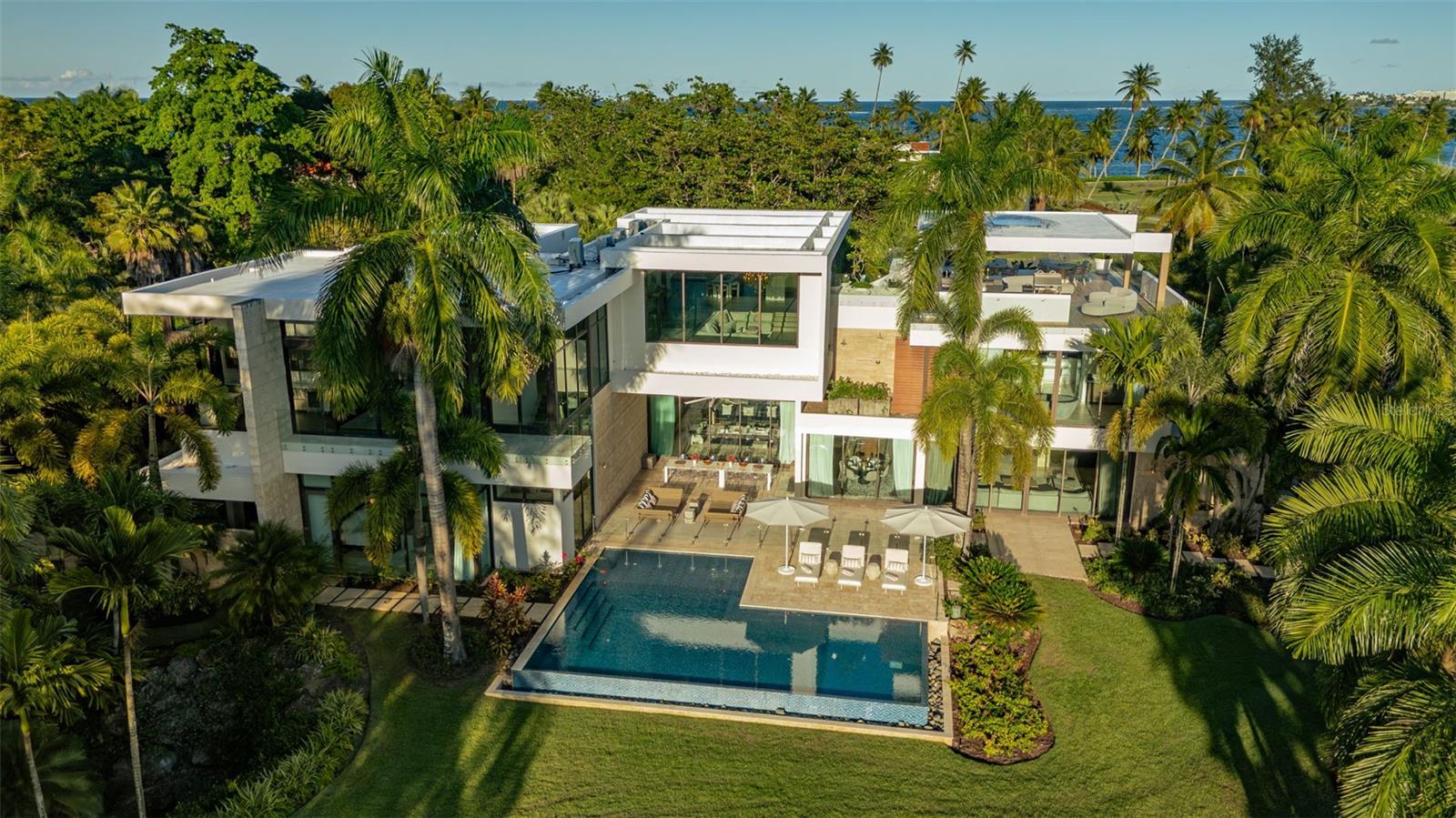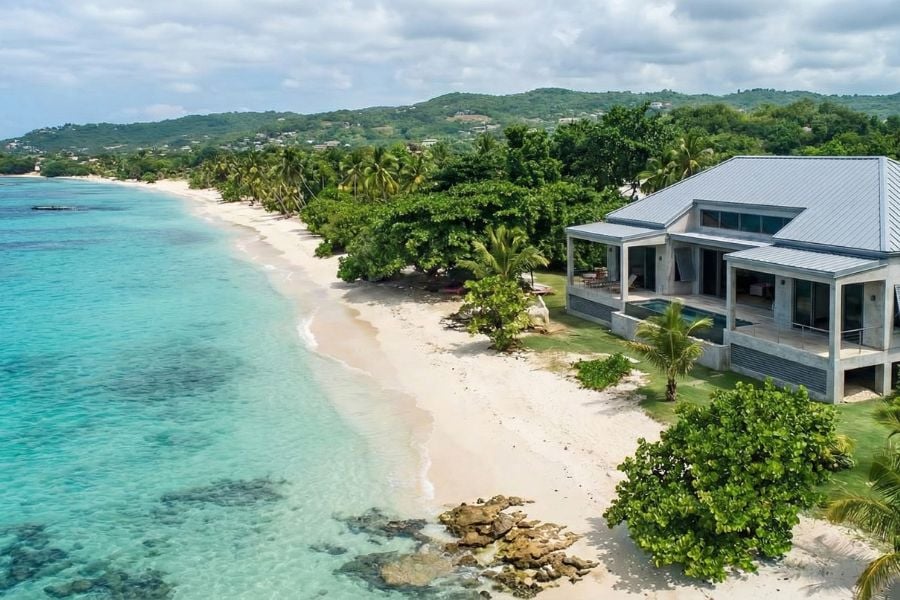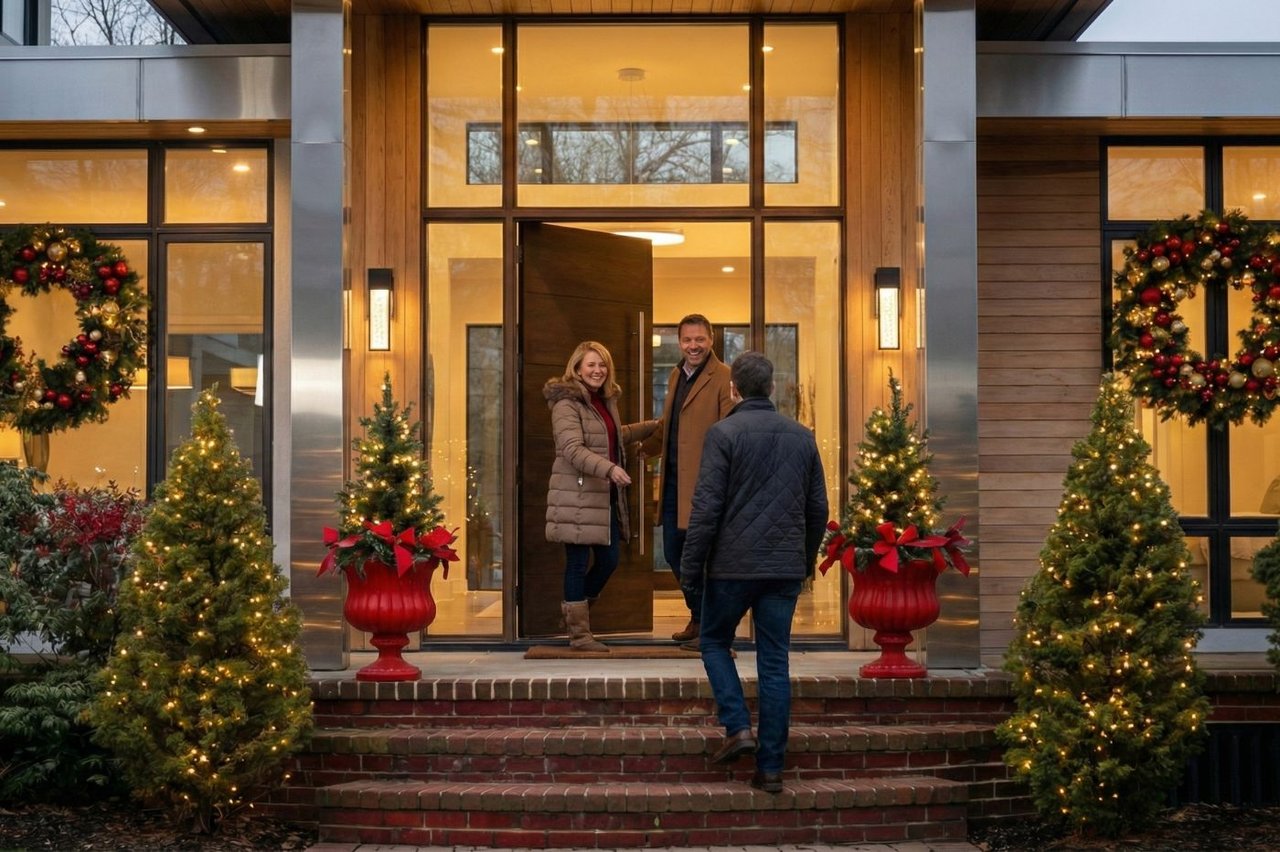Puerto Rico's luxury market offers unique opportunities and challenges for real estate investors, making regular portfolio adjustments essential for both protecting and enhancing wealth. The region's economic landscape, driven by tourism and bolstered by incentives like Act 60, can lead to property demand and value shifts, which may alter an investor's overall risk exposure. Maintaining a balanced portfolio becomes crucial as property values fluctuate and rental demand varies, especially in high-demand areas like San Juan or Dorado.
The objective of rebalancing is not just to maintain the desired risk-return profile but also to ensure that the portfolio aligns with evolving financial goals. Changes in personal circumstances—such as shifts in income needs, tax obligations, or investment horizons—can require strategic adjustments to real estate holdings. This blog will explore various techniques for adjusting and rebalancing a real estate-heavy portfolio, focusing on strategies suited to Puerto Rico's unique luxury real estate market.
Key Takeaways
- Regular rebalancing optimizes risk-return balance in Puerto Rico's luxury real estate.
- Calendar-based and threshold-based rebalancing techniques offer flexibility.
- Act 60 tax incentives play a vital role in portfolio adjustments.
- Balancing geographic concentration minimizes region-specific risks.
What is Rebalancing?

In a real estate-heavy portfolio, rebalancing involves periodically reviewing and adjusting one's holdings to ensure that the portfolio maintains the intended risk-return balance. This process can be more intricate in real estate than in other asset classes, as properties are not as liquid as stocks or bonds, and market dynamics can vary significantly across locations and asset types. Without rebalancing, investors risk becoming overexposed to specific asset classes, such as residential or commercial properties, or overly concentrated in certain geographic areas. This overexposure can increase vulnerability to market shifts, regulatory changes, and economic fluctuations, especially in a unique market like Puerto Rico's luxury sector.
Challenges and Rewards in Puerto Rican Real Estate
Puerto Rico's real estate market is shaped by several influential factors, making it both a rewarding and complex environment for investors. Market cycles, for example, can create periods of rapid appreciation or decline, especially in high-demand luxury areas like San Juan and Dorado. Policies such as Act 60 also provide tax incentives that attract high-net-worth investors, impacting local demand and property values.
These same policies may shift over time, making it critical for investors to monitor legislative changes. Local property demand, often influenced by tourism and seasonal fluctuations, adds another layer of complexity to rebalancing decisions.
Factors Influencing Rebalancing Decisions
Below is a table highlighting key factors influencing Puerto Rico's real estate market portfolio rebalancing decisions. By carefully monitoring these elements, investors can make strategic adjustments that enhance returns and effectively manage risk.
|
Factor
|
Description
|
Impact on Portfolio Rebalancing
|
|
Market Cycles
|
Real estate markets go through phases (expansion, peak, contraction, and recovery) that can impact property values and rental demand.
|
Identifying the market phase helps in timing acquisitions and sales, enabling adjustments to capture value or reduce exposure in high-risk phases.
|
|
Economic Policies (Act 60)
|
Puerto Rico offers tax incentives like Act 60, which can attract investors and increase demand for luxury properties.
|
Changes in tax policies can affect property values and investor interest, requiring rebalancing to optimize tax advantages and avoid potential overvaluation risks.
|
|
Local Demand Fluctuations
|
Demand for properties may vary due to tourism seasonality, which influences rental income and short-term property values.
|
Seasonal demand may necessitate adjustments, such as increasing short-term rental exposure during high-demand periods and reallocating during off-seasons.
|
|
Property Appreciation Rates
|
Different property types and locations in Puerto Rico may appreciate at varying rates, influenced by factors like tourism growth and urbanization.
|
Rebalancing allows investors to capture appreciation gains by reallocating capital from high-growth areas to undervalued opportunities for better long-term returns.
|
|
Geographic Concentration
|
Concentrating investments in specific areas like San Juan or Dorado increases exposure to localized risks.
|
Reducing geographic concentration can help mitigate risks tied to specific regions, balancing high-demand areas with emerging locations like Aguadilla or Rincón.
|
|
Asset Class Diversity
|
A real estate-heavy portfolio may include residential, commercial, and vacation rental properties, each with unique risks and returns.
|
Rebalancing by asset class diversifies income streams and stabilizes returns, balancing high-yield vacation rentals with stable, long-term commercial leases.
|
|
Investor's Financial Goals
|
Changes in an investor's personal financial objectives (e.g., income needs, retirement planning) can influence portfolio allocation.
|
Rebalancing aligns the portfolio with evolving goals, adjusting for cash flow needs or long-term appreciation based on the investor’s current financial stage.
|
|
Regulatory Changes
|
New regulations or modifications to real estate investment policies may affect profitability and ease of managing properties.
|
Monitoring regulatory changes helps preemptively adjust holdings to minimize regulatory risks or capitalize on favorable adjustments in policy.
|
Methods of Rebalancing a Real Estate Portfolio

1. Calendar-Based Rebalancing
Calendar-based rebalancing involves regularly reviewing and adjusting a portfolio—typically quarterly or annually. This method is well-suited for real estate, an asset class with lower liquidity and longer appreciation cycles. In the context of Puerto Rico's luxury real estate market, a calendar-based approach helps investors periodically assess property values, rental income stability, and local market conditions, even when the properties may not experience frequent short-term fluctuations.
Example: A yearly review aligns well with assessing the impacts of Puerto Rico's peak tourism seasons and evaluating tax implications from policies like Act 60. By following a set schedule, investors can maintain a disciplined approach to balance without reacting hastily to temporary market shifts.
2. Threshold-Based Rebalancing
On the other hand, threshold-based rebalancing occurs when assets deviate by a specified percentage from their target allocation—often set at 5% or more. This method offers flexibility, allowing investors to respond directly to significant changes in property values or shifts in rental income that alter the portfolio's risk profile. For Puerto Rico, where economic conditions and tourism-driven demand can lead to quick property valuation changes, this approach helps investors make targeted adjustments only when necessary.
Example: If a luxury property in a high-demand area like San Juan suddenly appreciates beyond 10% of its target value, rebalancing would involve reallocating gains by investing in another property or asset class, thus avoiding excessive exposure to one high-performing area.
3. Combination Approach
The combination approach merges calendar-based and threshold-based methods, leveraging both scheduled review structure and responsiveness to significant shifts. This hybrid method is highly effective for Puerto Rico's luxury real estate market portfolios. It ensures that assets are regularly reviewed while enabling flexibility to react to market conditions that seasonal tourism peaks or economic changes may influence.
Example: An investor may set a calendar review annually but also act if a property exceeds a 7% increase in value during Puerto Rico's peak tourism season, thus ensuring a proactive stance on timing and value deviations. This approach is particularly beneficial in Puerto Rico's market, where balancing short-term rental properties with long-term holdings can optimize income while maintaining overall portfolio stability.
Building and Showcasing PR Portfolios in the Real Estate Market
In Puerto Rico's competitive real estate industry, professionals must establish a strong personal brand to attract clients and new opportunities. A well-crafted PR portfolio is an essential tool for showcasing expertise, credibility, and past successes. It serves as a visual and documented representation of a professional’s work, making it easier for potential clients and employers to assess skills and experience.
Key Components of a Strong PR Portfolio:
- Professional Bio: A concise yet compelling introduction highlighting expertise, niche focus, and achievements in Puerto Rico’s real estate market.
- Case Studies: Documented success stories from past projects, including strategic approaches, solutions implemented, and measurable results.
- Media Coverage & Press Mentions: Published articles, press releases, interviews, or media recognition showcasing industry influence.
- Client Testimonials: Positive feedback from satisfied clients that reinforces professionalism and effectiveness.
- Portfolio of PR Campaigns: Showcasing promotional work, brand-building initiatives, and successful marketing efforts in real estate.
- Contact Information: Easy-to-access details to encourage networking and inquiries from clients.
How a PR Portfolio Enhances Real Estate Success
| PR Portfolio Component |
Purpose |
Example |
| Professional Bio |
Establishes expertise and credibility |
A summary of real estate experience in Puerto Rico with career highlights |
| Case Studies |
Demonstrates problem-solving skills and success in projects |
A case study on a successful high-end property marketing campaign |
| Media Coverage |
Strengthens brand authority and industry influence |
Featured interview in a top real estate magazine |
| Client Testimonials |
Builds trust and validates expertise |
Quotes from satisfied property buyers and investors |
| Portfolio of PR Campaigns |
Highlights the ability to manage promotions effectively |
Examples of real estate branding, social media campaigns, and property promotions |
| Contact Information |
Facilitates direct engagement with potential clients |
A clickable email, phone number, and social media links |
Creating an online PR portfolio improves visibility and allows for seamless sharing. Platforms like Copyfolio offer efficient tools to design a professional online presence. By leveraging a strong PR portfolio, real estate professionals in Puerto Rico can enhance their reputation and attract high-value opportunities.
How Taxes Can Impact Rebalancing Portfolio

When rebalancing a real estate portfolio in Puerto Rico, it's essential to consider the tax implications of buying and selling properties. Puerto Rico's tax incentives, such as those under Act 60, offer significant benefits, including exemptions on certain capital gains and reduced income tax rates for qualifying investors.
Minimize Transaction Costs
When rebalancing a real estate portfolio in Puerto Rico, it's essential to carefully manage transaction costs and tax impacts, especially when selling high-value properties. Puerto Rico's tax incentives, such as those under Act 60, can offer reduced tax rates on capital gains or income if specific requirements are met. Rather than rebalancing extensively, investors might consider partial adjustments by focusing on properties with higher cost bases.
This approach helps align the portfolio with target allocations while reducing the tax burden. For example, selling a high-cost-basis property in San Juan and reallocating funds to emerging markets like Aguadilla allows for a strategic adjustment without excessive tax costs.
Use Portfolio Cash Flows for Rebalancing
Another effective strategy is to rebalance through portfolio cash flows instead of outright property sales. Rental income or dividends can be redirected toward new investments or improvements in underweighted properties, helping to balance the portfolio without generating immediate taxable events. Additionally, if funds need to be withdrawn, focusing on overweight properties or assets helps maintain alignment.
For instance, reinvesting income from a luxury rental in Dorado into a long-term rental in a growing area supports balanced cash flow and appreciation potential while maximizing Puerto Rico's tax benefits.
Luxury Properties and Houses for Sale
Rebalancing a portfolio is essential for maximizing returns and managing risk in Puerto Rico's luxury real estate market, where dynamic factors like tourism demand and tax incentives shape property values. With a diverse selection of luxury Puerto Rico homes for sale, Christie's International Real Estate Puerto Rico offers premier investment options that align with strategic portfolio goals, helping investors achieve long-term financial growth.

Villa D’Or is a Ritz-Carlton Reserve–branded East Beach estate in Dorado Beach Resort offering over 10,700 interior sq. ft. of reimagined luxury with expansive ocean, golf, and lake views, resort-style amenities, and iconic architectural significance.

Spacious 3,200 sq. ft. canal-front home in Vistamar Marina Este featuring 4 bedrooms, pool, private 100-ft dock, generator, and direct ocean access minutes from the airport and Condado.

This exquisite 5-bedroom, 5.5-bathroom beachfront townhouse in Ocean Park, San Juan, combines luxurious design, panoramic ocean views, and modern amenities in a prestigious gated community.
Conclusion
In Puerto Rico's luxury real estate market, rebalancing your portfolio is crucial to optimize returns and mitigate risks associated with economic shifts, policy changes, and local demand fluctuations. By using effective techniques—like calendar-based or threshold-based adjustments—and factoring in tax benefits, investors can strategically align their holdings to meet evolving financial goals. Maintaining a balanced portfolio amidst the unique dynamics of Puerto Rico ensures stability and growth for the long term.
At Christie's International Real Estate Puerto Rico, we're here to support your luxury real estate journey on the island. Whether buying, selling, or renting, our team is committed to delivering premier service and expert guidance every step of the way. Contact us to explore exceptional listings and opportunities.
FAQs
How do you rebalance your portfolio?
Rebalancing a portfolio involves adjusting your holdings to maintain the desired balance of risk and return, particularly as market values fluctuate. In Puerto Rico real estate, this means periodically evaluating property values, rental income, and overall asset concentration to ensure alignment with financial goals. Investors may shift capital between different property types or geographic areas, like moving from high-demand regions like San Juan to emerging areas like Rincón, to optimize returns and reduce risks.
What is the rebalancing strategy of investors?
Investors in Puerto Rico's luxury real estate market often use a combination of calendar-based and threshold-based rebalancing strategies. Calendar-based rebalancing involves reviewing the portfolio on a set schedule, such as annually, to assess whether adjustments are needed. Threshold-based rebalancing occurs when properties deviate from their target allocations by a certain percentage, prompting investors to make changes only when substantial shifts occur in property value or rental demand.
This dual approach helps investors respond effectively to predictable seasonal changes and sudden market shifts.
When or how often should you rebalance your portfolio?
Optimal rebalancing in Puerto Rico's real estate market typically occurs annually. Rebalancing too frequently, like monthly or quarterly, can lead to unnecessary costs without significant gains, while waiting over two years may lead to misalignment with market conditions. Setting a yearly reminder for rebalancing helps maintain consistency and ensure the portfolio aligns with evolving financial goals and local market dynamics, such as the impact of Puerto Rico's tourism cycles and economic policies.
Related Articles:











